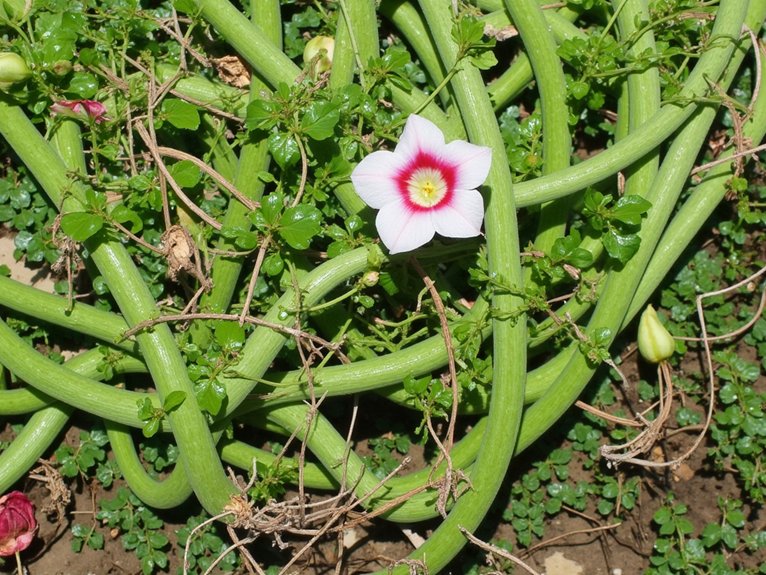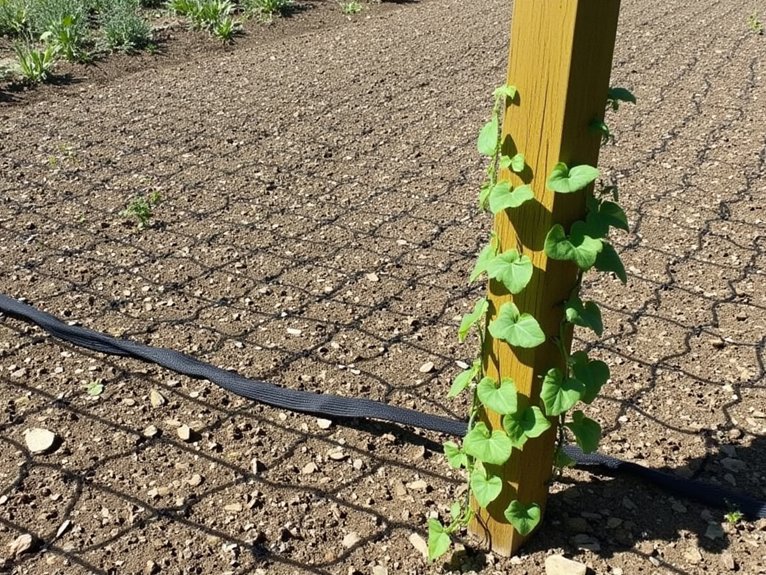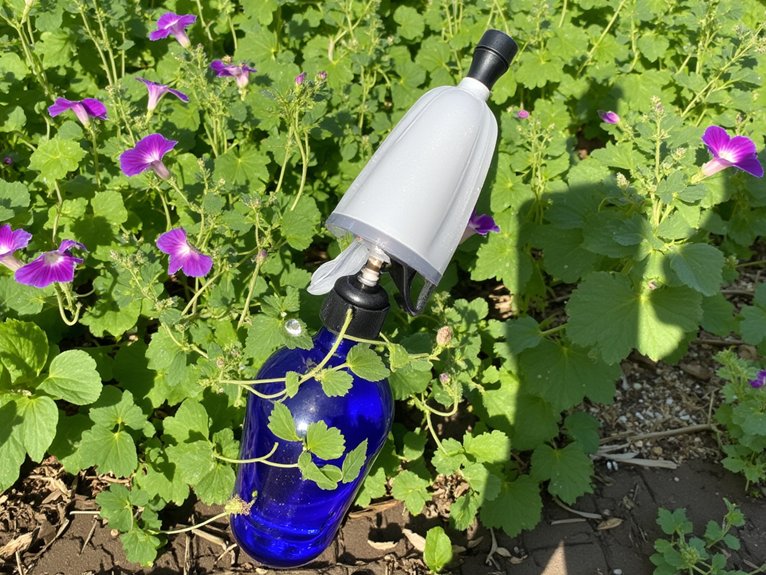Morning glory might appear harmless with its delicate purple and blue flowers, but this aggressive vine poses a serious threat to gardens nationwide. According to botanist Dr. Sarah Chen, “A single morning glory plant can produce over 500 seeds annually, spreading rapidly through gardens and landscaping.” The vine’s extensive root system, which can reach depths of 20 feet, makes removal particularly challenging. Garden enthusiasts must understand this invader’s patterns to protect their cherished plants from its strangling grasp.
Contents

Morning Glory plants frequently deceive gardeners with their delicate, trumpet-shaped blooms while harboring an aggressive nature that threatens native ecosystems. Their invasive characteristics include deep-rooting systems extending up to 10 feet underground and rapid spreading capabilities that can reduce crop yields by 50-80% in agricultural settings.
The ecological impact of these climbing vines is particularly severe, as they produce chemicals that inhibit nearby plant growth and compete aggressively for resources. Species like Field Bindweed and Hedge Bindweed have become established in over half of U.S. counties, making them a significant threat to both garden spaces and natural habitats.
Early Warning Signs and Identification
Recognizing invasive Morning Glory species before they become established represents a gardener’s best defense against these deceptive climbing vines. Early signs of invasion include thin, twining stems emerging in spring, often growing at rates exceeding 6 inches per day. When identifying morning glory infestations, look for heart-shaped leaves and aggressive climbing behavior on fences, trees, and structures.
Key warning signs include:
- New seedlings appearing in multiple garden areas
- Vines wrapping tightly around other plants
- Spreading root systems that resist pulling
- Rapid colonization of bare soil patches
- Dense leaf coverage blocking sunlight from other plants
Strategic Prevention Methods

While battling established Morning Glory infestations can be challenging, implementing strategic prevention methods offers gardeners the most effective defense against these persistent climbers.
Successful preventive measures begin with thorough garden planning. Start by inspecting all new plants for Morning Glory seedlings before introducing them to the garden. Install physical barriers like deep edging around garden beds, extending at least 12 inches into the soil. Maintain a strict “clean garden” policy by removing any suspicious vines immediately. Regular soil inspection during spring and fall helps detect and eliminate emerging seedlings before they establish extensive root systems.
Effective Manual Removal Techniques
The physical removal of established Morning Glory plants demands careful timing and proper technique to achieve lasting results. For best outcomes, implement hand pulling techniques when soil is moist, gently loosening the ground around the plant base. Using a garden fork, carefully excavate roots to a minimum depth of 10 inches, ensuring complete extraction of rhizomes and root fragments. “Even small root sections left behind can regenerate into new plants,” warns botanist Dr. Sarah Chen. Regular inspection and removal of emerging shoots over multiple seasons helps exhaust the plant’s extensive root system.
Chemical Control as a Last Resort

Since manual removal methods sometimes prove insufficient, chemical control offers a viable last resort for managing persistent Morning Glory infestations. When selecting herbicides, opt for systemic formulations that travel through the entire plant system to effectively kill roots and prevent regrowth.
Safe herbicide application requires:
- Reading and following label instructions precisely
- Applying during dry, wind-free conditions
- Using protective gear (gloves, mask, long sleeves)
- Targeting only Morning Glory plants
- Keeping pets and children away from treated areas
For best results, apply herbicides during active growth periods when temperatures range between 65-85°F.
Long-Term Monitoring and Maintenance
Successful Morning Glory management requires diligent monitoring for at least three growing seasons after initial removal efforts. Even after thorough removal, dormant seeds can sprout years later, demanding continuous vigilance and prompt action.
For long-term success, gardeners should:
- Inspect the area weekly during growing season
- Remove new sprouts immediately, including entire root system
- Document problem areas on property
- Maintain thick mulch barriers
- Check nearby areas for potential spread
- Keep detailed records of control methods used
Regular assessment helps prevent re-establishment and protects the garden’s health for years to come.
